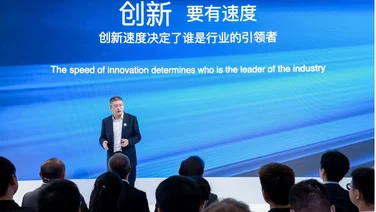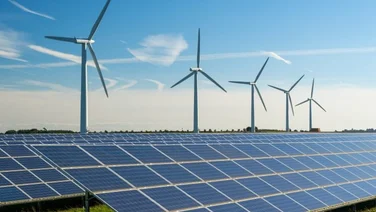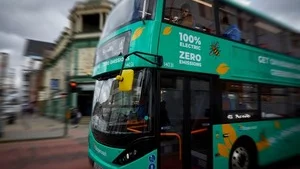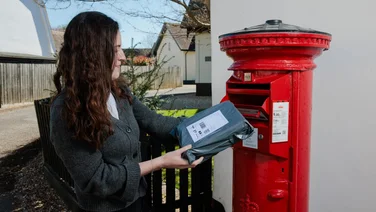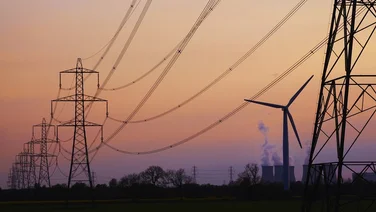47% of Brits have purchased one or more pieces of low-carbon technology over the past 12 months, according to our annual National Home Energy Survey.
Our survey of 2,134 adults shows that low-carbon purchases are up by eight percentage points, compared to our 2022 survey.
With that number set to rise even further in the next 12 months, green products are no longer a sideshow – they’re the main event.

How many Brits purchased low-carbon technology in the past 12 months?

47% of Brits have purchased at least one piece of low-carbon technology in the past 12 months.
That means practically half of the country has bought an electric vehicle, electric vehicle charging point, microwave boiler, hydrogen boiler, smart meter, solar panel, solar thermal system, storage battery, smart appliance, infrared heating panel, or heat pump.
Low-carbon technology helps people to reduce their carbon footprint in different areas of their life, including heating and lighting their home, and driving.
The most popular purchases were smart meters – which are free – and smart appliances, which are more affordable than most other options. They were acquired by 25% and 22% of respondents, respectively.
However, the next most-purchased item was one of the most expensive options – electric vehicles – which 7% bought.
This shows that the rapidly growing enthusiasm for electric cars has survived the extensive economic difficulties that many have faced over the past year.
How does this compare year-on-year?
47% of people bought low-carbon technology over the past 12 months. This is up from 39% last year.
Despite the cost of energy increasing by 27% for the average household, people are buying green products at even higher levels.
This reflects the fact that there have been 177,000 certified installations over the past year – more than the previous two years combined, according to the Microgeneration Certification Scheme.
The public is now more aware than ever that low-carbon items like solar panels and heat pumps can cut their bills and soften the blows from this energy crisis.
Low-carbon technology purchases by age bracket

This increase is fuelled by a rise of 12-13 percentage points among younger age groups.
Gen Z (born 1997-2013), Millennials (born 1981-1996), and Gen X (born 1965-1980) are all increasingly keen to go green.
Gen Z has particularly embraced electric vehicles, with 15% purchasing one. The youngest generation also got behind solar panels, with 9% buying them.
However, green tech purchases are down by three percentage points when it comes to Boomers (born 1946-1964), and down by five percentage points in the Silent Generation (born 1928-1945).
This is likely because some of them are on fixed incomes, while others haven’t fully absorbed the benefits of low-carbon technology.
Low-carbon technology purchases by income

The higher someone’s income, the more likely they are to have bought low-carbon technology over the past 12 months.
This makes sense – if you have enough money for the upfront cost, green products can cut your energy bills, reduce your carbon footprint, and increase your property’s value.
Their high return on investment often means they end up paying for themselves in energy bill reductions.
Understandably, more expensive products like heat pumps, electric cars, and storage batteries all saw the highest rates of uptake among the top income brackets.

For instance, 29% of people in households earning £150,000-£199,999 have bought an electric vehicle in the past year, compared to just 8% of people in households that make £40,000-£69,999 – or 2% in homes with an income below £18,000.
However, solar panels are now seemingly viewed as a relatively affordable option.
Between 5% and 7% of people in households earning anywhere from £25,000 to £199,999 bought solar panels.
What’s more, the highest percentage of respondents who went solar came in households making £40,000-£99,999, showing that solar panel costs are no longer a barrier to many.
Are Brits becoming more aware of low-carbon technology?
| Low-carbon technology | Awareness | ||||||||||
|---|---|---|---|---|---|---|---|---|---|---|---|
| None of these | Electric vehicle | Electric vehicle charging point | Heat pump | Hydrogen boiler | Infrared panels | Microwave boiler | Smart appliances | Smart meter | Solar panels | Solar thermal | Storage battery |
| 4% | 83% | 72% | 51% | 18% | 17% | 8% | 70% | 83% | 80% | 18% | 35% |
96% of people are aware of at least one of these low-carbon products, which suggests green technology has well and truly cut through to the public consciousness.
Electric vehicles, smart meters, and solar panels have the highest awareness rate, with 80% of the British public knowing about each one.
This makes sense – electric cars have been growing massively in popularity for a few years now, you can get a smart meter for free until 2025, and domestic solar panel installations have risen rapidly over the past 12 months.

More solar panels were fitted on homes in January 2023 than in any month since December 2015, according to the Microgeneration Certification Scheme.
The fact that only half of Brits have heard of a heat pump is shockingly poor, considering the government has been running a £450 million scheme to discount the price of heat pumps since May 2022.
But otherwise the outlook is positive, with one in six people knowing about infrared panels – a pretty new home technology – and hydrogen boilers, which are still in their prototype phase.
Awareness of low-carbon technology by age bracket
Generation | Average |
|---|---|
Gen Z | 35% |
Millennials | 41% |
Gen X | 45% |
Boomers | 49% |
Silent Generation | 55% |
The older the respondent, the more likely they are to be aware of low-carbon technology.
These products are mainly targeted at homeowners and customers with large amounts of disposable income, which perhaps explains why older age groups are more aware of them.
How many Brits are planning on buying low-carbon tech in the next 12 months?

49% of Brits are planning on purchasing low-carbon technology over the next 12 months.
And 65% of respondents who have bought a piece of low-carbon technology over the past 12 months plan to purchase one again.
The message is clear: green products are now widely popular, and buying one tends to lead to someone buying again.
This is likely because many green products can save you so much on your energy bills that they ultimately pay for themselves – and of course, they can massively reduce your carbon footprint.
According to our respondents, the most popular low-carbon technology over the next 12 months will be smart appliances like thermostats and light bulbs (19%), electric vehicles (16%), and smart meters (14%).
This shows people are most willing to acquire low-cost or free low-carbon products – like smart appliances and meters – but will splash the cash on green items like electric vehicles when they’re convinced of their benefits.
The government and industry must work harder to educate the public, otherwise products such as heat pumps (3%) and electric vehicle home chargers (6%) – which are both much cheaper than electric vehicles – will continue to attract low uptake.
How does this change based on age?

Younger people are much keener on buying low-carbon technology, despite generally being less aware of different types than older generations.
Gen Z and Millennials top the enthusiasm rankings for every green product, including expensive ones like electric vehicles, and newer, more obscure items like microwave boilers.
For example, 23% of Gen Z and 21% of Millennials plan to buy an electric car in the next 12 months, compared to just 10% of Boomers and 8% of the Silent Generation.
The relationship between awareness and enthusiasm for actually buying green products is directly inverse, meaning the generations that are more aware of green technology are less likely to buy them.
This isn’t necessarily a case of ignorance influencing buying decisions, though.
Younger generations are generally more enthusiastic about green issues and products, but many won’t be aware of items like heat pumps and storage batteries until they own a property – and young home ownership rates have plummeted in recent years.
How does this compare year on year?
The percentage of people planning to purchase a piece of low-carbon technology has dropped by four percentage points compared to last year, from 53% to 49%.
Enthusiasm for green products is still high, especially considering the joint energy and cost of living crises that have erupted over the past 12 months.
Understandably, people are keener to buy smart appliances – which generally cost hundreds of pounds at most – and less willing to commit to purchases that can cost thousands of pounds, like electric vehicles.
However, after a year in which inflation and the price of just about everything soared while wages failed to keep up, it’s encouraging that enthusiasm for green technology remains strong.
Explore the rest of our National Home Energy Survey 2023
Summary
Low-carbon technology is a massive industry that’s set to keep growing at pace.
This is great news for the fight against climate change, and for anyone who wants to lower their energy bills while reducing their carbon emissions.
With the younger generations eager to buy in, it’s now up to the industry and government to lower the initial costs of products like solar panels and electric vehicles so the most enthusiastic customers can get on board the green revolution.
To see how these results compare with last year’s survey, check out our National Home Energy Survey 2022.

